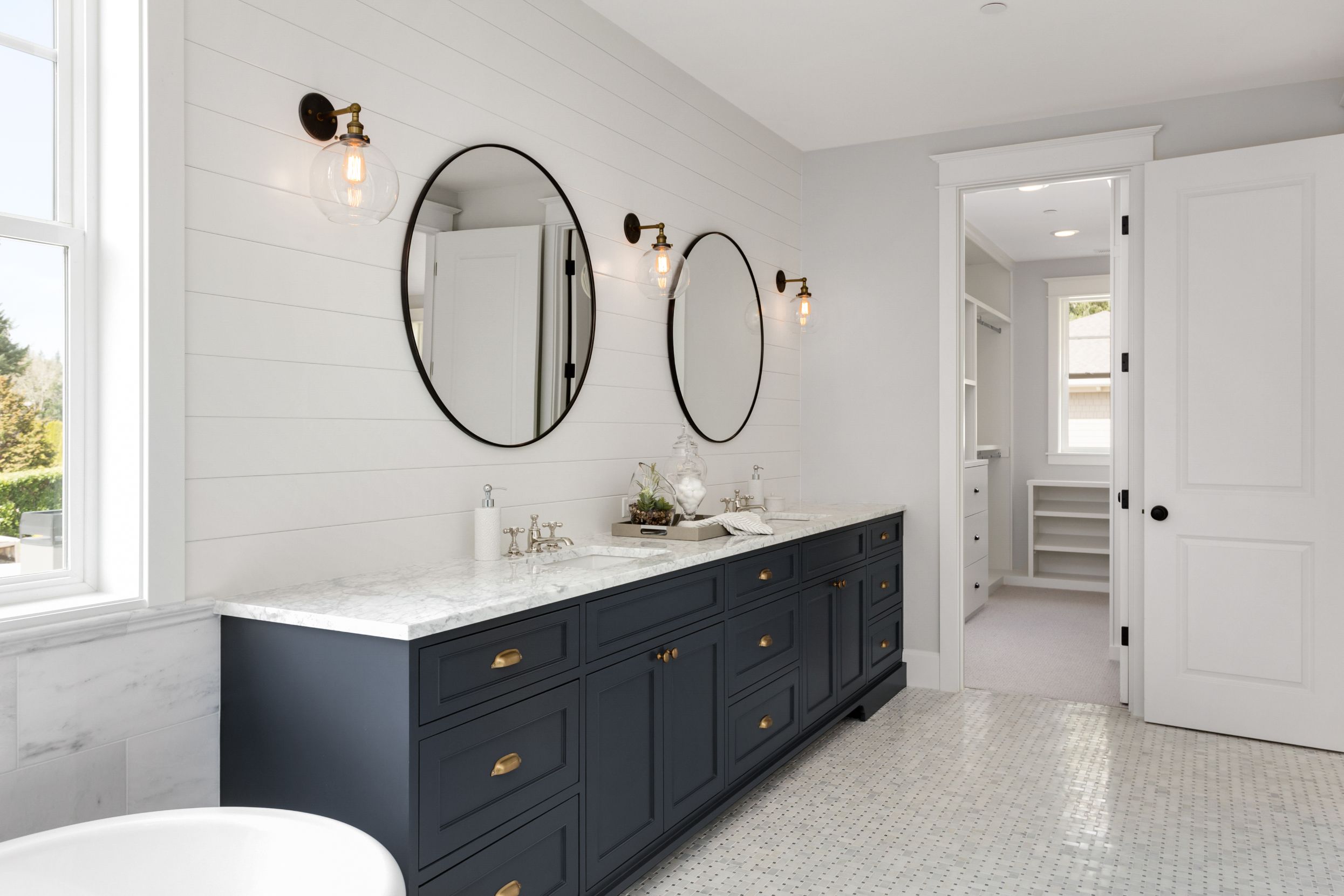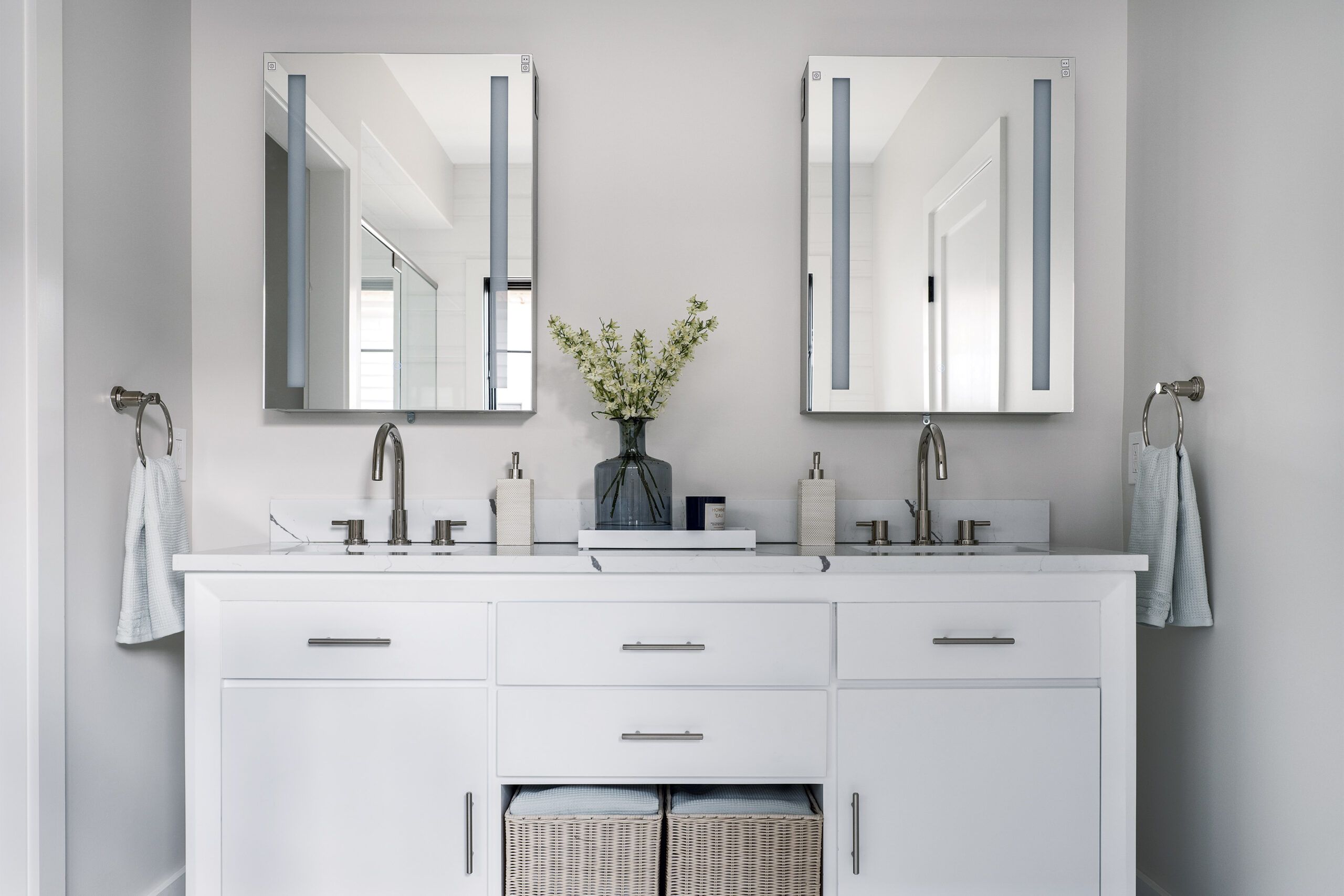Bathroom Paint Considerations
Painting a bathroom presents unique challenges due to the high levels of moisture, humidity, and potential for mildew growth. These factors can significantly impact the longevity and appearance of your paint job. Therefore, choosing the right paint and preparing the bathroom properly are crucial for a successful and long-lasting finish.
Importance of Choosing the Right Paint
The paint you choose for your bathroom should be specifically designed to withstand the unique conditions of this space. Moisture and humidity can cause regular paint to peel, crack, and even mold. Therefore, it is essential to select a paint with excellent adhesion, durability, and mildew resistance.
- Adhesion: This refers to the paint’s ability to bond firmly to the surface. In a bathroom, where surfaces may be damp or prone to condensation, good adhesion is crucial to prevent peeling or flaking. Look for paints labeled as “high-adhesion” or “alkyd-based” for optimal performance.
- Durability: Bathroom paint should be able to withstand frequent cleaning and scrubbing without losing its color or finish. Paints with a durable, washable finish are ideal for this space. Choose paints with a “scrubbable” rating, indicating their resistance to cleaning agents.
- Mildew Resistance: Bathrooms are susceptible to mildew growth, especially in areas with poor ventilation. Choose paints with mildewcide additives that inhibit mold and mildew growth. Look for paints labeled as “mildew-resistant” or “anti-fungal.”
Preparing the Bathroom for Painting
Proper preparation is essential for a successful paint job. This involves cleaning, patching, and sanding the bathroom surfaces to ensure a smooth and even finish.
- Cleaning: Before painting, thoroughly clean the bathroom walls and ceiling using a mild detergent and water. Remove any dirt, grime, soap scum, or mildew. Allow the surfaces to dry completely before proceeding.
- Patching: Repair any cracks, holes, or imperfections in the walls or ceiling using patching compound. Apply the compound according to the manufacturer’s instructions, ensuring it is smooth and even. Allow the compound to dry completely before sanding.
- Sanding: Once the patching compound is dry, sand the surfaces to create a smooth and even finish. This will help the paint adhere properly and create a professional-looking result. Use fine-grit sandpaper for this step.
Types of Bathroom Paint: What’s The Best Paint For A Bathroom

Choosing the right paint for your bathroom is crucial because it needs to withstand high humidity, frequent cleaning, and potential moisture damage. Understanding the different types of bathroom paint will help you make an informed decision based on your specific needs and budget.
Acrylic Latex Paint
Acrylic latex paint is the most popular choice for bathrooms due to its versatility and affordability. It offers a good balance of durability, moisture resistance, and ease of application.
- Advantages:
- Easy to apply and clean up with water.
- Dries quickly, typically within an hour or two.
- Offers good adhesion to most surfaces.
- Resistant to mildew and moisture.
- Comes in a wide range of colors and finishes.
- Disadvantages:
- May not be as durable as oil-based paint in high-traffic areas.
- Can be susceptible to scratches and scuffs.
Acrylic latex paint is suitable for most bathroom surfaces, including walls, ceilings, and trim. It’s a good option for both new construction and repainting projects.
Oil-Based Paint
Oil-based paint is known for its durability and resistance to moisture and mildew. It’s a good choice for areas that experience high levels of moisture or frequent cleaning, such as shower stalls and tubs.
- Advantages:
- Extremely durable and resistant to scratches and scuffs.
- Provides a hard, glossy finish that is easy to clean.
- Highly resistant to moisture and mildew.
- Disadvantages:
- Requires mineral spirits for cleanup, which can be messy and time-consuming.
- Takes longer to dry than acrylic latex paint.
- Can have a strong odor during application.
Oil-based paint is best suited for areas that require a high level of durability and moisture resistance, such as shower stalls, tubs, and trim.
Epoxy Paint
Epoxy paint is a specialized type of paint that forms a hard, durable, and moisture-resistant coating. It’s often used in commercial settings for its high performance, but it’s also becoming increasingly popular for residential bathrooms.
- Advantages:
- Extremely durable and resistant to scratches, abrasion, and chemicals.
- Highly resistant to moisture, mildew, and stains.
- Forms a seamless, waterproof coating that can be used on floors, walls, and even countertops.
- Disadvantages:
- Can be difficult to apply and requires proper preparation.
- May have a strong odor during application.
- More expensive than acrylic latex or oil-based paint.
Epoxy paint is ideal for high-traffic areas, such as shower stalls, tubs, and floors, where durability and moisture resistance are paramount.
Specialized Mildew-Resistant Paint
Mildew-resistant paint is formulated with special additives that inhibit the growth of mildew and mold. It’s a good choice for bathrooms that are prone to moisture buildup, such as those with poor ventilation or frequent showers.
- Advantages:
- Helps prevent the growth of mildew and mold.
- Available in both acrylic latex and oil-based formulas.
- Provides an extra layer of protection against moisture damage.
- Disadvantages:
- May not be as effective as other specialized coatings, such as epoxy paint, in high-moisture areas.
Mildew-resistant paint is a good option for all bathroom surfaces, but it’s especially recommended for areas that are prone to moisture buildup, such as shower stalls, tubs, and ceilings.
Bathroom Paint Comparison Table
| Paint Type | Advantages | Disadvantages | Suitable for |
|---|---|---|---|
| Acrylic Latex | Easy to apply, dries quickly, good adhesion, moisture resistant, wide range of colors and finishes | May not be as durable as oil-based paint, can be susceptible to scratches and scuffs | Walls, ceilings, trim |
| Oil-Based | Durable, resistant to scratches and scuffs, highly resistant to moisture and mildew | Requires mineral spirits for cleanup, takes longer to dry, can have a strong odor | Shower stalls, tubs, trim |
| Epoxy | Extremely durable, resistant to scratches, abrasion, and chemicals, highly resistant to moisture, mildew, and stains | Can be difficult to apply, may have a strong odor, more expensive | Shower stalls, tubs, floors |
| Mildew-Resistant | Helps prevent the growth of mildew and mold, available in both acrylic latex and oil-based formulas | May not be as effective as other specialized coatings in high-moisture areas | All bathroom surfaces, especially prone to moisture buildup |
Selecting the Right Paint Color

Choosing the right paint color for your bathroom is an important decision that can significantly impact the overall feel and atmosphere of the space. The right color can create a calming and relaxing environment, enhance the natural light, and even make the room feel larger.
Color Psychology in the Bathroom
Color plays a significant role in influencing our emotions and perceptions. In a bathroom, where we seek relaxation and rejuvenation, choosing the right color palette can create a soothing and inviting atmosphere.
- Cool Colors: Blues, greens, and purples are associated with tranquility, peace, and cleanliness. They can create a calming and spa-like ambiance, making the bathroom feel like a sanctuary. For instance, a light blue can evoke feelings of serenity and spaciousness, while a deep teal can add a touch of sophistication and drama.
- Warm Colors: Reds, oranges, and yellows are known for their energizing and stimulating effects. While these colors may not be ideal for the entire bathroom, using them strategically can create a focal point or add a pop of energy to a neutral space. A touch of warm yellow can create a sense of cheerfulness and optimism, while a deep red can add a touch of luxury and vibrancy.
- Neutral Colors: Whites, grays, and beiges are versatile and timeless choices for bathrooms. They provide a clean and crisp backdrop for other design elements, such as towels, rugs, and accessories. White, in particular, reflects light, making the space feel brighter and more spacious.
Using Color to Create Space and Enhance Light, What’s the best paint for a bathroom
Color can be used to create the illusion of space and enhance the natural light in a bathroom.
- Light Colors: Light colors, such as white, pale blue, or soft green, reflect light, making the space feel larger and brighter. They can also make a small bathroom feel more airy and spacious.
- Dark Colors: Dark colors, such as navy blue, charcoal gray, or deep green, can absorb light, making a space feel smaller and more intimate. However, using them strategically on a single wall or in a specific area can create a dramatic focal point and add depth to the room.
- High-Gloss Finishes: High-gloss paint finishes reflect light more effectively than matte finishes, making a space feel brighter and more expansive. They can also create a more modern and sophisticated look.
Popular Bathroom Paint Colors and Their Associated Moods and Styles
Here are some popular bathroom paint colors and their associated moods and styles:
- White: White is a classic and timeless choice for bathrooms, evoking a sense of cleanliness, simplicity, and spaciousness. It pairs well with any style, from modern to traditional.
- Gray: Gray is a versatile neutral that can be both calming and sophisticated. It can be used to create a modern, minimalist look or a more traditional, elegant atmosphere.
- Pale Blue: Pale blue is a calming and refreshing color that evokes a sense of peace and tranquility. It is a popular choice for bathrooms with a spa-like atmosphere.
- Sage Green: Sage green is a natural and earthy color that can create a serene and inviting atmosphere. It pairs well with wood accents and natural materials.
- Soft Yellow: Soft yellow is a cheerful and uplifting color that can add a touch of warmth and sunshine to a bathroom. It is a good choice for small bathrooms as it can make them feel larger and brighter.
